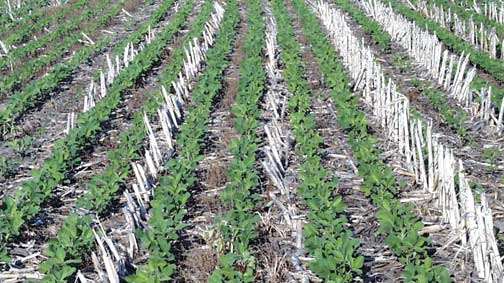
Last week, farmers from around the state gathered to learn about no-till farming in Leedey, Oklahoma during the Whirlwind No-Till Expo. Local no-till farmer, Jimmy Emmons was there to host the expo and guided a tour of his soil-centric operation highlighting several innovations implemented on his farm to those in attendance eager to learn his methods.
“Traditionally around here people would tell you, you couldn’t raise milo because it would burn up in this heat and wouldn’t pollinate,” Emmons said, “but we are proving that it can be done.”
Emmons is accomplishing this by utilizing a cover crop system to increase water ‘infiltration’ into the soil. He explained that this method allows rain water to penetrate deep into the soil and stores itself there to be used by plants as needed, remaining safe from evaporation thanks to the shady cover crops.